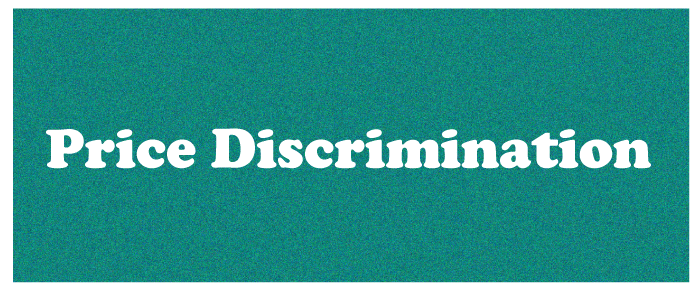What Is Price Discrimination?Price discrimination is a pricing method in which firms set varied prices for the same services or products in different markets based on how much customers are willing to pay in those markets. A business that practices pure price discrimination will charge each customer the maximum price they will accept. In more common forms of price discrimination, the seller creates groups of customers based on specific attributes or geolocation and assigns each group a different price. 
It is also a strategy to ensure winning competition by allowing customers to pay low prices for items in certain markets. Brands profit from the strategy by increasing their product sales and surpassing rival companies. The Concept behind Price DiscriminationWhen merchants choose to set a fair price that customers are willing to pay, they engage in price discrimination. This method is employed to increase sales. The pricing may be higher or lower depending on consumers' ability to pay, consumption patterns, and situations. The different prices eventually balance the overall cost according to the production. Every company in the market seeks to overtake its rival when there is intense competition. They always try to keep the prices as low as they can; because of this, they sometimes attract new customers. Customers are segmented during the process based on the buyers' characteristics and interests. They also establish specific prices that have to be paid for any goods or services acquired by specific groups. The approach mainly works when the business has a monopoly on the market. Secondly, the interests and preferences of buyers also matter, as well as how specifically the product is marketed. Lastly, when companies use monopoly price discrimination to change product pricing in various marketplaces, it maximizes profits for companies and, in most circumstances, lowers customer costs. Examples of Price DiscriminationPrice discrimination methods are employed by numerous businesses, including the airline, entertainment, and pharmaceutical sectors. Coupon distribution, the use of particular discounts (such as age discounts), and the development of loyalty programs are a few examples of price discrimination. Additionally, Retailers who purchase in bulk may be subject to a different pricing strategy from those who purchase in smaller quantities from the sellers of the services and goods. For instance, companies might provide significant discounts for large orders. The price per square foot in one place may be very high for land or a flat because of the location's amenities and accessibility, whereas the same size of flat may cost less in another locale. The airline sector is one illustration of price discrimination. When booking plane tickets in advance, buyers often spend less than those who delay until the last minute. Types of Price Discrimination
Price Discrimination is divided into three types. Those are mentioned below: First-Degree DiscriminationWhen a business charges the highest price per unit of consumption, this is referred to as first-degree discrimination, also called perfect price discrimination. Since those prices vary between units, the firm captures all potential consumer surpluses for either itself or the economic surplus. First-degree price discrimination, wherein a business establishes a distinct price for each good or service sold, frequently happens in industries related to customer service. Second-Degree Pricing DiscriminationWhen a business charges varying prices for different quantities consumed, like through quantity discounts on large purchases, this is known as second-degree pricing discrimination. Other names for it include menu pricing and product versioning. Examples include reward cards that offer loyal customers discounts on future purchases. Third-Degree Price DiscriminationWhen a firm charges different prices to certain consumer groups, it engages in third-degree price discrimination or group pricing. For instance, a theatre might charge varying amounts to adults, children, and seniors for the same film. This type of discrimination is the most prevalent in general life.
Next TopicDebtor
|
 For Videos Join Our Youtube Channel: Join Now
For Videos Join Our Youtube Channel: Join Now
Feedback
- Send your Feedback to [email protected]
Help Others, Please Share









